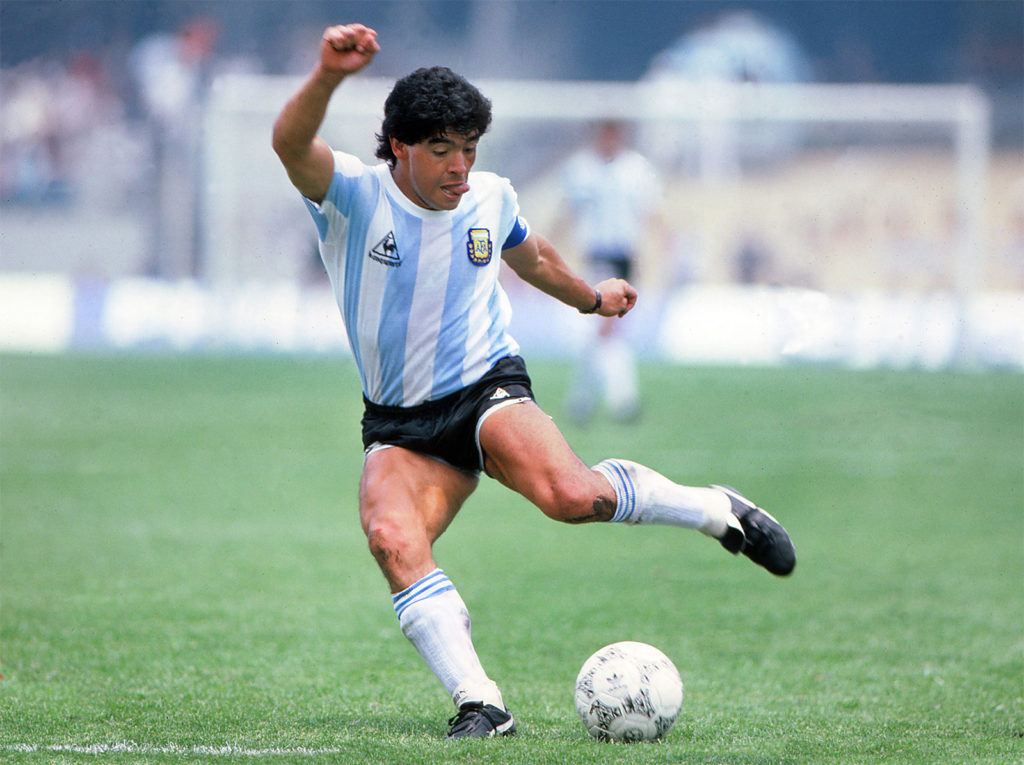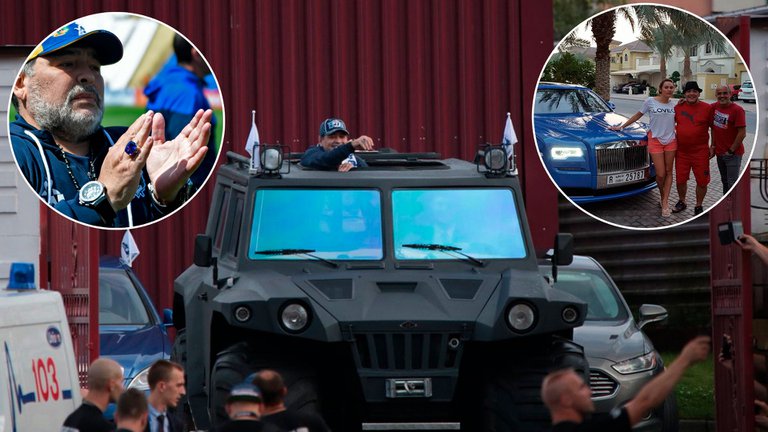RIO DE JANEIRO, BRAZIL – There is a legacy, soccer, that is priceless. Diego Maradona was synonymous with the joy that football brings, a sport taken to an artistic level, the mirror of hundreds of thousands of children who once kicked a ball. And he continues to sit on the throne of the last captain of the Argentine team to win the World Cup.
There is another material inheritance. And much less poetic. Maradona is a brand, a product, a symbol with a price. And a real accounting machine from his breakthrough in football in 1976 to November 25th, 2020, the day he stopped breathing. In fact, four attorneys crossed his life (Jorge Citerszpiler, Marcos Franchi, Guillermo Coppola, and Matías Morla) who administered what he reaped (and also wasted) in contracts, advertising, image, and other sums.

Following his death, there are five heirs and beneficiaries: Dalma and Gianinna (fruit of Jersey Ten’s marriage to Claudia Villafañe), Diego Junior, Jana, and Dieguito Fernando. They will all play their cards separately. A long and mediatized inheritance proceeding is expected, basically because there are inconclusive claims of affiliation that will put any decision on hold.
Once the court publishes the orders convening all heirs and creditors within 30 days, those who are claiming paternity of the former player will make their demands; everything suggests that the gavel will only drop once the beneficiaries of the inheritance are confirmed.
One of the claims is public and known: that of young Santiago Lara, a native of La Plata. The other became more notorious in recent days: Magalí Gil’s case. There is also uncertainty as to whether claims may come from Cuba. The law authorizes the judge to “delay” the process for a reasonable time so that these people may forward their claims and prove that they are also heirs.
Furthermore, the lawsuit lodged by Rocio Oliva for “compensation for cohabitation” and three lawsuits by Claudia Villafañe are pending. The case brought by “the museum”, the goods and T-shirts claimed by Maradona, expired with the star’s demise.
What does Maradona’s inheritance consist of? His assets and contracts in force at the time of his death are diverse and heterogeneous. In Argentine territory, Maradona owned the mythical property of Segurola and Havana, and also an extra apartment. He also owned another more modern property in Puerto Madero.
In addition, there’s the home of Rocío Oliva and her family in Bella Vista, which he bought and later donated to his ex-partner. Both the house in the gated community of Campo de Roca, in Brandsen, and the house in El Tigre, where he died, are rented. To that, we should add his collection of watches; many of which he gave away (it was his fetish for rewarding his team’s players when they scored goals), but he kept a large amount, which he rotated on his wrists.

Maradona owned four cars in Argentina, but he also had two very expensive ones in Dubai: a Rolls Royce Ghost, valued at 300,000 Euros, and a BMW i8, valued at 145,000. He did not sell either of them before the 2018 FIFA World Cup in Russia, when he stopped coaching Fujairah FC and left Dubai. And bringing them to the country implied an even higher expense than that paid for the vehicles, because he would have to disassemble them at origin and reassemble them at destination.
However, Diego had had all his belongings brought from the United Arab Emirates in a container. Infobae accessed the property inventory, which is kept in a vault in the town of Béccar, notarized by a notary public and safeguarded.
There are invaluable pieces, such as a letter written and signed by Fidel Castro, the guitar with which Andres Calamaro composed his song, a platinum ball that the FIFA awarded to the soccer legends or a plaque that the same organization offered him in his passage through the World Cup in Russia 2018. And they will also be part of the decedent’s estate.
In Belarus, where he had a fleeting experience as honorary president of Dínamo Brest, he was rewarded with a diamond ring valued at 300,000 Euros, becoming one of the highlights of his time on the bench of Gimnasia y Esgrima La Plata.
He was also gifted a luxury Overcomer Hunta van, with a fiberglass chassis and a 100-liter fuel tank, which can navigate (yes, it is amphibious) at a rate of 8 kilometers per hour. That asset was still waiting for him in Brest. Another key detail for his descendants: Diego got 0.5% of the team’s shares while also increasing his wealth.
In this last stage of his life, with Morla as his attorney, he diversified his business abroad. He signed juicy contracts; to name three, with Konami (for the PES), with a sportswear brand and with a luxury watch brand.
In addition, he has soccer schools that bear his name in China, he has investments in Cuba (among them, a hotel) and also in Italy, where his business link was Stefano Ceci, a fan who traveled to the Caribbean to meet him, slept at the door of the La Pradera Clinic (where Diego was treated for his addictions) with the dream of having his picture taken, and ultimately became a key figure in his inner circle.
But the loot that will remain in the center of the disputes is the “Maradona brand” and its derivatives; for instance, “El 10”, “Maradona”, “Diegol”, “La Mano de Dios”, and “El Diego”, among other similar signatures. The owner of the marks is the company Sattvica SA, chaired by Matías Morla, as confirmed by the Official Gazette. It was founded in 2015, with the attorney as president and Maxi Pomargo (right hand of the former soccer player in recent years), as deputy director. Maradona himself granted the “Diego Armando Maradona” trademark to Sattvica as purchaser.
Consequently, all businesses from now on using the Maradona brand must go through the company. And, unless the current model is modified, the heirs would receive a percentage of royalties that arise from the business with respect to what was signed by Diego.
Can Maradona’s children dispute the trademark transfer in court? Yes, but they will not have it easy. It will depend on whether the contracts offer any room for objection. The alternative: to prove that at the time the contracts were signed he was not in full possession of his faculties, a profoundly complex gamble.
Maradona’s footballing heritage will never be contested. The material heritage, which is not perennial, is already in dispute.
Source: infobae

